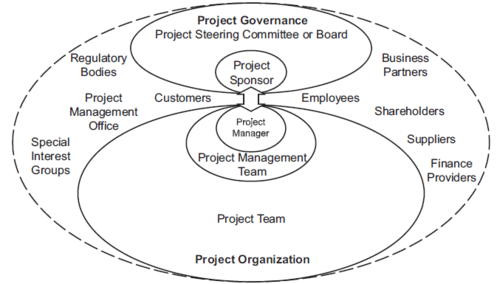Stakeholder management
Contents |
Abstract
The prerequisite for creating a successful project, program, or portfolio is to identify the views of different actors. A key element is, therefore, to ensure good stakeholder management. For all projects, programs, or portfolios, it is crucial that the stakeholder's needs within communication, commitment, and systematic management are handled correctly. The purpose of manage stakeholders is to give appropriate understanding and attention to stakeholders' needs and expectations. This process includes activities such as identifying stakeholder concerns and resolving issues.[1]
Strong stakeholder management enables better cooperation with other actors and thus ensures that the interests of all parties are satisfied. To ensure strong stakeholder management, there are several models and tools that can be used in all types of projects. This article explains how stakeholder management is used in practice. There will also be made an in-depth analysis of individual key models and a discussion about possible limmations that can occurs by using these models.
Stakeholder classification and organization
In a project, The stakeholders are placed in different subcategories. The purpose is to create an overview of the project participants. A distinction is made to identify the internal and external stakeholders and their roles in the different phases of the project. It is therefore important to classify each stakeholder. Figure xx shows an overview of a classic organization chart of a project team and a steering group. The project manager is responsible for the project team, which can vary in size depending on the project scope and complexity. The project team must be able to provide the necessary professional competence to solve technical problems in connection with the project. The project manager's responsibility is to pass on the decisions that are discussed in the steering group to the project team. The steering group helps to set requirements for the project's quality, finances, and general project development. In this organizational structure, there are some other stakeholders who contribute other essential competencies and knowledge. These stakeholders are found in the outer circle of Figure xx. These actors can, e.g., be finance providers, business partners, and customers.
Stakeholder analysis
A detailed stakeholder analysis provides and assists the project in developing a structured strategy. As mentioned earlier, the stakeholders can act as individuals or groups who can be affected by any considerations. The stakeholder analysis is a dynamic method and is therefore not a strictly defined method. The method must be adapted to the current project and its difficulties. The method should be apt to deal with complexity and on the strategic level. The stakeholder analysis consists of 5 steps:
1. Determining the objective of the analysis
2. Demarcating the analysis
3. Stakeholder identification
4. Analysis of stakeholder characteristics
5. Conclusion
text
The classic stakeholder matrix
As stated in previous sections, many stakeholders contribute to the project in different aspects, and therefore it is essential to involve them throughout the project process. Based on the stakeholder classification and stakeholders' analysis, these stakeholders are placed into overall categories, allowing the managers to take action. The most commonly used stakeholder map is the power/interest matrix and is illustrated in figure xx. The matrix gives an overview of each stakeholder grouping relating to power and interest resources. The matrix divides the stakeholders into 4 different types depending on the level of influence.
• Minimal Effort: for those who have low power and low influence. This group should is placed in the exterior periphery, and therefore only a small amount of time and effort must be used.
• Key Player: The key players have high power and significant influence. This quadrant is considered the most important. The stakeholders identified as critical players must be satisfied, and they must have major acceptability in the project's strategies.
• Keep Informed: They can influence the attitude of the most influential stakeholders. Their needs can be meet through information.
• Keep Satisfied: They are relatively passive stakeholders, but they can become to an interested party with high power and influence in case of poor decision-making.
The primary purpose of the matrix is to:
• Allow the project manager to have an overview of any stakeholder and their contribution
• Prioritize the requests and demands from the stakeholders
• Avoid conflicts between stakeholders and maintain common interests
• Make a guideline to channel the right amount of time to each stakeholder
• Predict future behavior and thereby reduce the risk for failure
text
References
- ↑ ISO 21500 2012:E 4.3.10/
